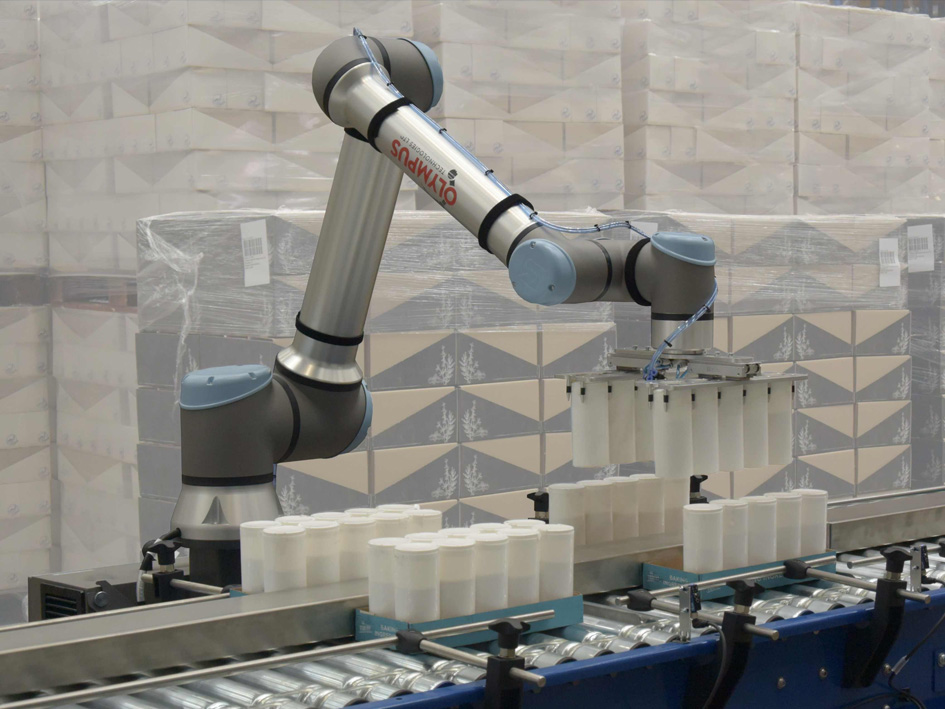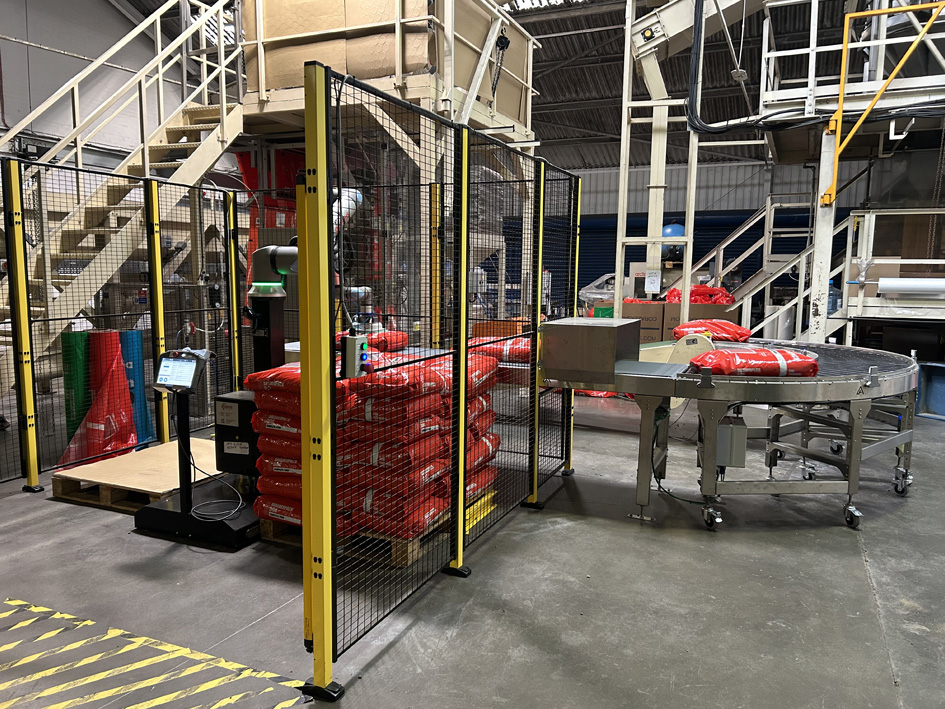Why Welding Automation Is No Longer Optional
As manufacturers face rising labour costs and an ongoing shortage of skilled welders, welding automation is no longer a luxury, it’s a necessity. Whether you're scaling a metal fabrication business or optimising your production line, automated welding equipment ensures consistent weld quality while increasing output and efficiency.
But what does the return on investment really look like when deploying automation systems? This guide breaks down what manufacturers should expect, from upfront costs and labour savings to long-term performance, and how to ensure your automation project delivers measurable, lasting value.
What Is Welding Automation?
Welding automation refers to the use of automated systems, such as robotic welding arms, collaborative robots, or automation equipment, to perform welding tasks with minimal human involvement. These tools operate within broader manufacturing processes, ensuring a consistent pace and improved structural integrity.
Depending on your operations, you may consider:
- Robotic welding: Suited to high-volume, precision-based production
- Collaborative robots: Effective for low volume production or mixed-batch jobs
- Gantry systems: Best for large-scale parts or complex geometries
All help reduce manual labour while reallocating skilled human welders to higher-value roles.
Why Many Manufacturers Invest in Welding Automation
1. Reduce Labour Costs and Tackle Labour Shortages
Ongoing labour shortages make it difficult to staff the shop floor. By embracing robotic automation, manufacturers can:
- Reduce labour costs through repetitive task automation
- Shift human workers to roles like system monitoring and preventive maintenance
- Maintain staffing levels more predictably
This shift results in stable output and labour cost savings over time.
2. Improved Quality and Structural Integrity
Manual welding introduces inconsistency. By contrast, automated welding delivers:
- Consistent quality, even with variable part shapes
- Fewer defects, reducing rework and inspection fails
- Enhanced structural integrity and industry compliance
The result is a stronger, more reliable product.
3. Increased Production and Output
Unlike human operators, automated equipment doesn’t take breaks. With correct setup and care, a robotic system runs continuously, enabling 24/7 production and increased output without raising headcount.
4. Safer Workspaces
Automation reduces exposure to heat, fumes, and arc flash. As a result, safety protocols can focus on equipment operation rather than hazardous manual work.
Choosing the Right Welding Automation Solution
The best automation solution depends on your product type, volume, and available space. Here's a quick comparison:
| Equipment Type | Best Use Case | Pros | Cons |
|---|---|---|---|
| Robotic Welding Arms | High-volume, repeatable tasks | Fast, precise, scalable | High initial investment |
| Gantry Systems | Large or irregular components | Broad reach, adaptable | Needs ample floor space |
| Collaborative Robots | Small-batch or flexible production | Safer around people, agile | Lower reach and payload |
Also consider current manual labour dependence, skilled labour availability, required training, and how well your shop floor accommodates new equipment.
Calculating ROI: Beyond Labour Savings
Understanding automation investment returns means evaluating more than wages. Consider these elements:
Initial Investment and Direct Costs
- Initial costs include the robotic system, software, and team training
- Direct costs also cover integration downtime and planning
Ongoing Requirements
- Routine maintenance is essential to prevent failures
- Software updates and support may add to the total cost
ROI Metrics to Track
- Payback period: Time to recover your initial investment
- Net present value (NPV): Value of expected direct savings over time
- Internal rate of return (IRR): A long-term profitability gauge
Even if you’re “just buying the robot,” factor in tooling, safety features, and system reconfiguration.
A Typical ROI Timeline: What to Expect
A mid-sized metal fabrication company installing its first robotic welding system might follow this general trajectory:
Year 0–1: Planning and Setup
- Finalise automation investment
- Train operators and install the system
- Manage initial downtime
Year 1–2: Operational Growth
- Output improves
- Quality defects decline
- Early labour cost savings emerge
Year 2–3: ROI Achieved
- Full uptime and production predictability
- Quantifiable cost savings and production benefits
Best Practices for Automation Success
To ensure your automation project performs:
- Begin with a pilot to assess fit
- Choose a vendor experienced in industrial automation
- Invest in workforce training and knowledge
- Track metrics like throughput, defects, and increasing output
Pitfalls to Avoid
Underestimating the Total Cost
Don't stop at hardware. New machinery might require shop floor changes, custom fixtures, or software upgrades.
Poor Equipment Fit
Avoid buying based on hype. Match your automation solution to your actual volume and welding processes.
Inadequate Training
Without training, systems go underused. Ensure operators and technicians understand all automation components, not just how to “press start.”
Maintaining Your Automated Welding Equipment
To preserve performance and ROI, adopt a structured preventive maintenance plan:
- Conduct regular cleaning and inspection
- Analyse system data for early failure signs
- Stock vital spare parts
- Partner with OEMs for ongoing support
Long-term productivity depends on proactive care.
What’s Next: The Future of Welding Automation
New technologies are expanding the value of automated welding:
- AI for predictive maintenance, minimising unplanned downtime
- Adaptive sensors for handling complex geometries
- Cloud dashboards for managing fleets of industrial robots
Investing in new technology today positions your business for future gains, and a sustainable competitive advantage.
Conclusion: ROI Is More Than Just Labour Savings
Welding automation is about more than filling a skilled labour gap. It’s a strategic decision to drive efficiency, consistent quality, and measurable outcomes. With the right strategy, the return on investment justifies itself in cost reduction and increased production.
Evaluate your current setup, map potential gains, and test with a pilot system. You might find your most valuable asset isn’t just the robot, but the transformation it drives.
FAQs
What should manufacturers expect in welding automation ROI?
When considering welding automation ROI: what manufacturers should expect, key outcomes include lower labour costs, better weld quality, and improved efficiency. Many firms report that benefits exceed projections by the third year of operation.
How do labour shortages affect decisions around automation?
A growing labour shortage makes hiring skilled welders difficult. Investing in automated systems helps maintain output while reducing reliance on manual recruitment.
What are hidden costs when buying a welding robot?
Beyond hardware, expect costs for training, safety features, layout redesigns, and software integration. These add to your total cost, so include them in your automation investment plan.
How do I calculate ROI for a robotic welding system?
Use tools like payback period, net present value, and internal rate of return. These help track when your initial investment begins generating true direct savings.














